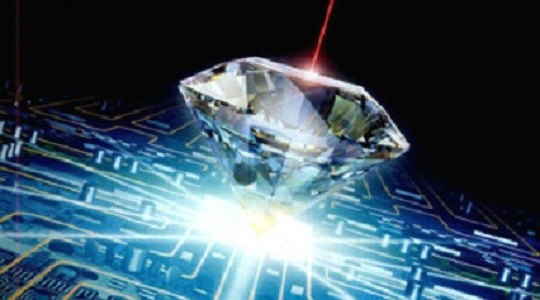
Microbiology课程:前往报名学习
There is a world of microorganisms on earth that is hard to see with our eyes. It has a long history, but the individual is small, and it was not seen by humans through a microscope until the mid-17th century. Small microbes contain huge energy, they are everywhere and omnipotent. They are both "angels" and "devils". If you are interested, please join the "Microbiology" course and explore the mysteries of "Little People" together.
开设学校:华中农业大学;学科:其他、
There is a world of microorganisms on earth that is hard to see with our eyes. It has a long history, but the individual is small, and it was not seen by humans through a microscope until the mid-17th century. Small microbes contain huge energy, they are everywhere and omnipotent. They are both "angels" and "devils". If you are interested, please join the "Microbiology" course and explore the mysteries of "Little People" together.
-0.1 Characteristics and research objects of microbiology
--Characteristics and research objects of microbiology
--Characteristics and research objects of microbiology
--Which groups of microorganisms are included?
--What are the research objects of microbiology?
-0.2 The discovery of microorganisms and the history of microbiology
--The discovery of microorganisms and the history of microbiology
--The discovery of microorganisms and the history of microbiology
-0.3 Types and characteristics of microorganisms
--Types and characteristics of microorganisms
--Types and characteristics of microorganisms
--What are the characteristics of microorganisms?
--Why do we say "microorganisms are everytime and everywhere"?
-0.4 The role of microorganisms
--Explain the application of microorganisms in agriculture, industry, environment and medicine.
-0.5 Prospects for the future development of microbiology
--Prospects for the future development of microbiology
--Prospects for the future development of microbiology
-Unit Test Questions of Introduction
--Unit Test Questions of Introduction
-1.1 Structure and function of prokaryotic microbial cells
--Structure and function of prokaryotic microbial cells
--Structure and function of prokaryotic microbial cells
--What are the basic components of prokaryotic microorganisms
--The basic shape and size range of prokaryotic microbial cells
-1.2 The cell wall of prokaryotic microorganisms
--The cell wall of prokaryotic microorganisms
--The cell wall of prokaryotic microorganisms
--The operation steps and principles of Gram staining
-1.3 Plasma membrane, inner membrane structure, and cell contents of prokaryotic microbial cells
--Plasma membrane, inner membrane structure, and cell contents of prokaryotic microbial cells
--Plasma membrane, inner membrane structure, and cell contents of prokaryotic microbial cells
--Structure and function of bacterial cell membrane
-1.4 The accessory structure of bacterial cells
--The accessory structure of bacterial cells
--The accessory structure of bacterial cells
--Spore structure, function, formation process, and what are the characteristics
--What is the difference between the flagella structure of Gram-positive and negative cells.
-1.5 Comparison of prokaryotic cells and eukaryotic cells
--Comparison of prokaryotic cells and eukaryotic cells
--Comparison of prokaryotic cells and eukaryotic cells
--The difference between prokaryotic cells and eukaryotic cells in cell wall and cell membrane
-1.6 Classification and identification of prokaryotic microorganisms (1)
--Classification and identification of prokaryotic microorganisms (1)
--Classification and identification of prokaryotic microorganisms (1)
--What are the two major categories of the basis or principles of biological classification?
--What are the taxonomic units below the prokaryotic microorganism "species"
-1.7 Classification and identification of prokaryotic microorganisms (2)
--Classification and identification of prokaryotic microorganisms (2)
--Classification and identification of prokaryotic microorganisms (2)
--Which technologies are used for microbial classification in biochemistry and nucleic acid molecules?
-1.8 Classification and identification of prokaryotic microorganisms (3)
--Classification and identification of prokaryotic microorganisms (3)
--Classification and identification of prokaryotic microorganisms (3)
--What is the main basis for introducing the classification of bacteria in the two Berger's Handbooks?
-1.9 Bacteria (1)
--Why is Bacillus thuringiensis known as an expert in insecticide?
--How does tetanus happen? How to prevent it?
-1.10 Bacteria (2)
--Compare the differences between Rhizobium and Agrobacterium.
--What are the special habits of Bdellovibrio?
-1.11 Special bacteria
--How are sheath bacteria formed?
--What is the significance of studying myxobacteria?
-1.12 Mycoplasma, Rickettsia and Chlamydia
--Mycoplasma, Rickettsia and Chlamydia
--Mycoplasma, Rickettsia and Chlamydia
--The difference between Mycoplasma, Rickettsia and Chlamydia and bacteria and viruses
--What is the contribution of Chinese microbiologist Tang Feifan?
-1.13 Actinomycetes
--What are the typical forms of actinomycetes?
--What is the reproduction method of actinomycetes?
-1.14 Prokaryotic microorganisms-cyanobacteria
--Prokaryotic microorganisms-cyanobacteria
--Prokaryotic microorganisms-cyanobacteria
--Why are cyanobacteria classified from algae to bacteria?
--What is water bloom? How to control water bloom?
-1.15 Prokaryotic microorganisms-archaea
--Prokaryotic microorganisms-archaea
--Prokaryotic microorganisms-archaea
--Where can I find methanogens? Discuss the importance of methane bacteria ecology and application.
-Chapter 1 Unit Test Questions of Prokaryotic Microbiology
--Unit Test Questions of Prokaryotic Microbiology
-2.1 Overview of eukaryotic microorganisms
--Overview of eukaryotic microorganisms
--Overview of eukaryotic microorganisms
--Why are plants and animals referred to as producers and consumers, and fungi as converters?
-2.2 Fungal classification system and common filamentous fungi
--Fungal classification system and common filamentous fungi
--Fungal classification system and common filamentous fungi
--How many kinds of fungi are currently known?
-2.3 Yeast
--Yeast
--Yeast
--What is the difference between yeast colony morphology and bacteria?
--What are the hazards of yeast to human health? Why are yeasts considered conditional pathogens?
-2.4 The characteristics and nutrition of filamentous fungi
--The characteristics and nutrition of filamentous fungi
--The characteristics and nutrition of filamentous fungi
-2.5 Asexual and sexual reproduction of filamentous fungi
--Asexual and sexual reproduction of filamentous fungi
--Asexual and sexual reproduction of filamentous fungi
--What is the difference between fungal spores and bacterial spores?
--What kinds of fungal asexual spores are there? What is the formation process of each asexual spore?
-2.6 Penicillium and Penicillin
--Talk about your views on Fleming's "Negligence" discovery of penicillin and won the Nobel Prize.
-2.7 Microalgae
--How to prevent algae disasters?
--What is the significance of algae in nature?
-2.8 Protozoa
--Protozoa
--Protozoa
--Why is it that protozoa are neither animals nor plants?
--Give examples of the benefits of protozoa to humans?
-Chapter 2 Unit Test Questions of Eukaryotic Microbiology
--Chapter 2 Unit Test Questions of Eukaryotic Microbiology
-3.1 Overview of the virus
--Why are antibiotics ineffective against viruses, but interferons are effective?
--How can we use viruses? Give an example.
-3.2 Introduction to bacteriophages
--Introduction to bacteriophages
--Introduction to bacteriophages
--What are the main morphological types and structural composition of bacteriophages?
--What are the chemical components of viruses? Where are they distributed in virus particles?
-3.3 Vigorous phage and one-step growth curve
--Vigorous phage and one-step growth curve
--Vigorous phage and one-step growth curve
--Describe the infection process of virulent phage.
--How to determine the one-step growth curve?
-3.4 Mild phage and lysogenicity
--Describe the characteristics of lysogenic bacteria.
--What is the difference between lambda phage and PI phage?
-3.5 Animal viruses
--Is it possible for viruses to be used as biological weapons for terrorist attacks?
--Give examples of other viruses that have had a major impact on human life and health in history?
-3.6 Plant viruses
--Describe the main characteristics of plant viruses.
-3.7 Insect viruses
--Briefly describe the infection and transmission methods of insect viruses
-3.8 Sub-virus
--Why is the discovery of subviruses a major event in the life sciences of the 20th century?
--Compare the main difference between satellite virus and satellite RNA.
-Chapter 3 Unit Test Questions of Virus
--Chapter 3 Unit Test Questions of Virus
-4.1 Nutrients of microorganisms
-4.2 Nutritional types of microorganisms
--Nutritional types of microorganisms
--Nutritional types of microorganisms
--What are the types of chemical energy organic nutrient microorganisms?
-4.3 Absorption of nutrients by microorganisms
--Absorption of nutrients by microorganisms
--Absorption of nutrients by microorganisms
--Briefly describe the characteristics of active transport and the main substances transported
-4.4 Medium for microorganisms
--What is the coagulant commonly used as a solid medium? What are its characteristics?
--What problems should be paid attention to when preparing medium?
-Chapter 4 Unit Test Questions of Microbial Nutrition
--Chapter 4 Unit Test Questions of Microbial Nutrition
-5.1 Basic concepts of microbial metabolism
--Basic concepts of microbial metabolism
--Basic concepts of microbial metabolism
--What are the links of biological oxidation?
--Compare the similarities and differences between the three methods of ATP production.
-5.2 Biological oxidation of chemical heterotrophic microorganisms-substrate dehydrogenation
--Biological oxidation of chemical heterotrophic microorganisms-substrate dehydrogenation
--Biological oxidation of chemical heterotrophic microorganisms-substrate dehydrogenation
-5.3 Biological oxidation-respiration of chemical heterotrophic microorganisms
--Biological oxidation-respiration of chemical heterotrophic microorganisms
--Biological oxidation-respiration of chemical heterotrophic microorganisms
--What are the characteristics of the bacterial respiratory chain?
-5.4 Biological oxidation-fermentation of chemical heterotrophic microorganisms
--Biological oxidation-fermentation of chemical heterotrophic microorganisms
--Biological oxidation-fermentation of chemical heterotrophic microorganisms
--Compare bacterial alcohol fermentation with yeast alcohol fermentation.
-5.5 Energy metabolism of chemoautotrophic microorganisms
--Energy metabolism of chemoautotrophic microorganisms
--Energy metabolism of chemoautotrophic microorganisms
--How many types of hydrogenase are there in hydrogen bacteria?
--Why are obligate autotrophic bacteria aerobic?
-5.6 Energy metabolism of light energy microorganisms
--Energy metabolism of light energy microorganisms
--Energy metabolism of light energy microorganisms
--What are the six categories of prokaryotic photosynthetic organisms?
--Describe the composition of the photosynthetic system of photosynthetic bacteria.
-5.7 Catabolism of microorganisms
--Catabolism of microorganisms
--Catabolism of microorganisms
--How many stages of catabolism are generally divided into?
--What are the characteristics of EMP, HMP, ED and TCA pathways?
-5.8 Biological nitrogen fixation
--Biological nitrogen fixation
--Biological nitrogen fixation
--Briefly describe the mechanism of nitrogen fixation.
--Necessary conditions for biological nitrogen fixation
-5.9 Anabolism of microorganisms (1)
--Anabolism of microorganisms (1)
--Anabolism of microorganisms (1)
--What are the types of microbial synthesis reactions?
--What are the three elements of anabolism?
-5.10 Anabolism of microorganisms (2)
--Anabolism of microorganisms (2)
--Anabolism of microorganisms (2)
--What are the four important ways to fix carbon dioxide? Which approach is earlier in evolution?
-5.11 Anabolism of microorganisms (3)
--Anabolism of microorganisms (3)
--Anabolism of microorganisms (3)
--Describe the specific steps of peptidoglycan synthesis.
--How is bacterial terpene alcohol regenerated?
-Chapter 5 Unit Test Questions of Microbial Metabolism
--Chapter 5 Unit Test Questions of Microbial Metabolism
-6.1 The cell cycle of bacteria
--What is the difference between growth and reproduction?
--What is growth? What is development?
-6.2 Colony growth of microorganisms
--Colony growth of microorganisms
--Colony growth of microorganisms
--The basic law of bacterial population growth?
-6.3 Determination of microbial growth
--Determination of microbial growth
--Determination of microbial growth
--What are the methods for measuring the growth of microorganisms?
--What is the practical significance of microbial growth measurement?
-6.4 Environmental factors affecting the growth of microorganisms
--Environmental factors affecting the growth of microorganisms
--Environmental factors affecting the growth of microorganisms
--What is the pH range in which bacteria, actinomycetes, and fungi can grow? What is the optimum pH?
-6.5 Control of microbial growth (1)
--Control of microbial growth (1)
--Control of microbial growth (1)
--Compare the difference between sterilization, disinfection and preservation.
--Why are the process conditions of autoclave sterilization lower than that of dry heat sterilization?
-6.6 Controlling the growth of microorganisms (2)
--Controlling the growth of microorganisms (2)
--Controlling the growth of microorganisms (2)
--What are the main chemical substances that control the growth of microorganisms?
-6.7 Control of microbial growth (3)
--Control of microbial growth (3)
--Control of microbial growth (3)
--Briefly describe the mechanism of bacterial resistance to antibiotics
--Briefly describe the biological factors that affect the growth of microorganisms?
-Chapter 6 Unit Test Questions of Microbial Growth and Control
--Chapter 6 Unit Test Questions of Microbial Growth and Control
-7.1 Overview of Microbial Ecosystem
--Overview of Microbial Ecosystem
--Overview of Microbial Ecosystem
--Briefly describe the characteristics of the microbial ecosystem?
--The role and composition of the microbial ecosystem
-7.2 Soil microorganisms
--Why do we say that the soil has the conditions for microbial life?
--What microorganisms are in the soil?
-7.3 Water environment microorganisms
--Water environment microorganisms
--Water environment microorganisms
--How to use the role of microorganisms to manage the eutrophication of water bodies?
-7.4 Air and extreme environment microorganisms
--Air and extreme environment microorganisms
--Air and extreme environment microorganisms
--Where do the microorganisms in the air come from?
--What are the main groups of microorganisms in the air?
-7.5 Uncultured microorganisms
--What is the reason why the microorganism has not been cultivated?
-7.6 Interrelationships between microbial populations
--Interrelationships between microbial populations
--Interrelationships between microbial populations
--What are the relationships between microbial populations? Give an example for each.
--What are the typical parasitic relationships? for example
-7.7 The mutual growth and the parasitic relationship between microorganisms and plants
--The mutual growth and the parasitic relationship between microorganisms and plants
--The mutual growth and the parasitic relationship between microorganisms and plants
--Briefly describe the groups of microorganisms that cause plant diseases.
-7.8 The symbiotic relationship between microorganisms and plants: nodules
--The symbiotic relationship between microorganisms and plants: nodules
--The symbiotic relationship between microorganisms and plants: nodules
--How to understand the three basic characteristics of rhizobia?
--Discuss the nodule formation process and nitrogen fixation.
-7.9 Production and application of rhizobia
--Production and application of rhizobia
--Production and application of rhizobia
--Compared with chemical nitrogen fertilizers, what are the advantages of rhizobia inoculants?
--Which bacterial agents or environmental factors will affect the application effect of inoculants?
-7.10 The symbiotic relationship between microorganisms and plants: Mycorrhiza (1)
--The symbiotic relationship between microorganisms and plants: Mycorrhiza (1)
--The symbiotic relationship between microorganisms and plants: Mycorrhiza (1)
--Compare the characteristics of endophytic mycorrhiza and ectomycorrhiza.
--Briefly describe the formation conditions of ectomycorrhiza
-7.11 The symbiotic relationship between microorganisms and plants: Mycorrhiza (2)
--The symbiotic relationship between microorganisms and plants: Mycorrhiza (2)
--The symbiotic relationship between microorganisms and plants: Mycorrhiza (2)
--Briefly describe the structural characteristics and types of endophytic mycorrhiza?
--The role of arbuscular mycorrhizal fungi?
-7.12 The relationship between microorganisms and animals
--The relationship between microorganisms and animals
--The relationship between microorganisms and animals
--What kind of relationship exists between microorganisms and animals? Give an example for each.
-7.13 The role of microorganisms in the material cycle of nature (1)
--The role of microorganisms in the material cycle of nature (1)
--The role of microorganisms in the material cycle of nature (1)
--Describe the role of microorganisms in the carbon cycle.
--Describe the role of microorganisms in the nitrogen cycle.
-7.14 The role of microorganisms in the circulation of substances in nature (2)
--The role of microorganisms in the circulation of substances in nature (2)
--The role of microorganisms in the circulation of substances in nature (2)
--Describe the role of microorganisms in the phosphorus cycle.
--Describe the role of microorganisms in the sulfur cycle.
-Chapter 7 Unit Test Questions of Microbial Ecological
--Chapter 7 Unit Test Questions of Microbial Ecological
-8.1 The material basis of genetic variation
--8.1 The material basis of genetic variation
--The material basis of genetic variation
--Nucleic acid is the material basis of genetic variation, is there any other genetic material?
--Describe an experimental method that proves that genetic material is DNA transformation.
-8.2 Microbial Genome
--Briefly describe the characteristics of the microbial genome
--Briefly describe how the genome exists
-8.3 Genetic recombination of bacteria
--Genetic recombination of bacteria
--Genetic recombination of bacteria
--Discuss gene recombination and methods of bacteria
--Which method is faster, conversion or combination?
-8.4 Transduction of bacteria
--Discuss the type and formation mechanism of transduction.
--Do you think there is a phenomenon that leads to death?
-8.5 Conjugation of bacteria
--What are the cell forms and characteristics of factor F?
--The pros and cons of high-frequency recombinant strains?
-8.6 Fungal gene recombination
--Briefly describe the process of sexual hybridization
--Brief description of quasi-reproductive process
-8.7 Gene mutation rules and molecular basis
--Gene mutation rules and molecular basis
--Gene mutation rules and molecular basis
--Describe the types and mechanisms of gene mutations
--What are the main types of mutants of microorganisms?
-8.8 Principle of induced mutation
--Principle of induced mutation
--Principle of induced mutation
--Briefly describe the principle of physical and chemical mutagenesis
--Describe the mutagenic mechanism of nitrous acid.
-8.9 DNA damage repair
--Brief description of DNA damage repair methods
--If you suspect that you have been injured, what emergency measures should you take
-8.10 Microbial mutation breeding
--Briefly describe the principles and methods of microbial mutation breeding
--The types and dosages of mutagens for microbial mutation breeding
-Chapter 8 Unit Test Questions of Microbial Genetic and Variation
--Chapter 8 Unit Test Questions of Microbial Genetic and Variation
-What is your feeling after completing the course?
-Microbiology Course Exam
1994年在华中农业大学获得微生物学博士学位以后留校任教,一直承担微生物学教学和科研工作,是国家精品资源共享课程《微生物学》及国家双语教学示范课程《微生物生物学》的主讲人,先后主讲《普通微生物学》、《普通微生物学实验》、《抗生素与抗生菌》、《微生物生物学》、《微生物生物学实验》及《高级微生物学》等课程,主持完成了湖北省教委教改项目——农业微生物学教材建设60年发展研究(2010-2012)及国家精品课程微生物学数字资源建设(2014-2016),主持完成了校普通微生物学实验精品实践课建设项目,积极开展《微生物学》研究性教学,教学效果优良,学生评教分数历年位居全院前茅。2006年获校级教学质量优秀一等奖。主编了国家十二五规划教材及农业部十三五规划教材《微生物学》(2019,农业出版社)、《微生物学数字课程》(2016,高教出版社)、《微生物学双语教学动画》电子教材(2013,高教出版社),作为第二主编完成了国家十一五规划教材《微生物学》(2011,高教出版社)和《微生物学实验》(2007,农业出版社),参编了全国高等学校十二五农林规划教材《微生物学实验教程》(2013,高教出版社)及《基因工程》(2013,高教出版社)。2009年参加的教改成果“以教材建设为先导的微生物学教学改革”被评为湖北省高等院校教学成果二等奖。2012年“农业微生物学教材建设60年发展研究”获校教学改革成果二等奖。现为湖北省微生物学会常务理事,中国土壤学会土壤生物和生物化学专业委员会副主任,中国微生物学会教学工作委员会委员,担任《生物资源》杂志编委、《微生物学通报》编委及国际SCI期刊Frontier in Microbiology编委。2016年被评为华中农业大学师德先进个人,2017年入选全国万名优秀创新创业导师。从事土壤与环境微生物学研究,先后主持4项国家自然科学基金,目前主持与参与国家重点研发计划各1项,已发表SC论文100多篇,获批授权专利6项。





